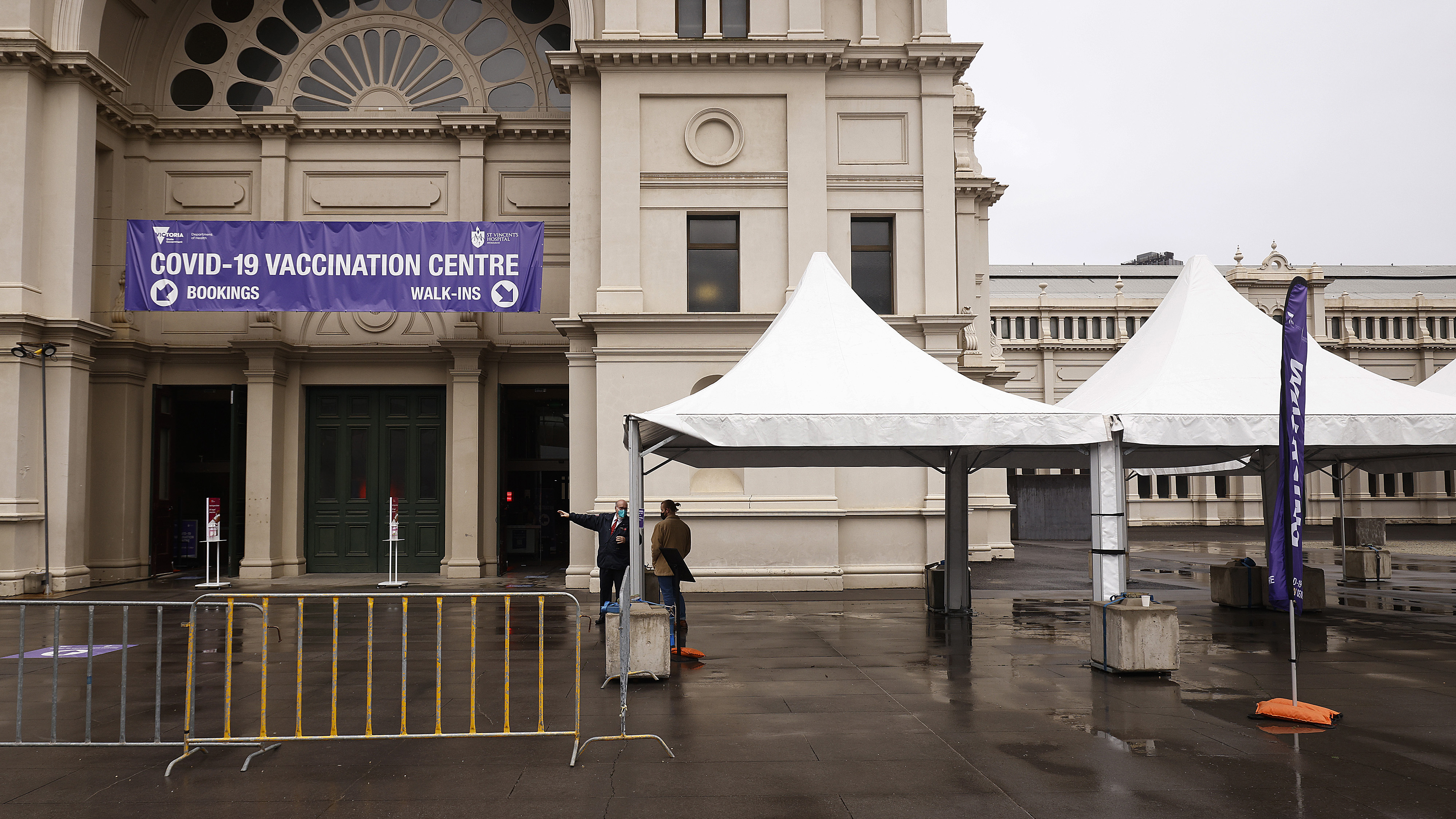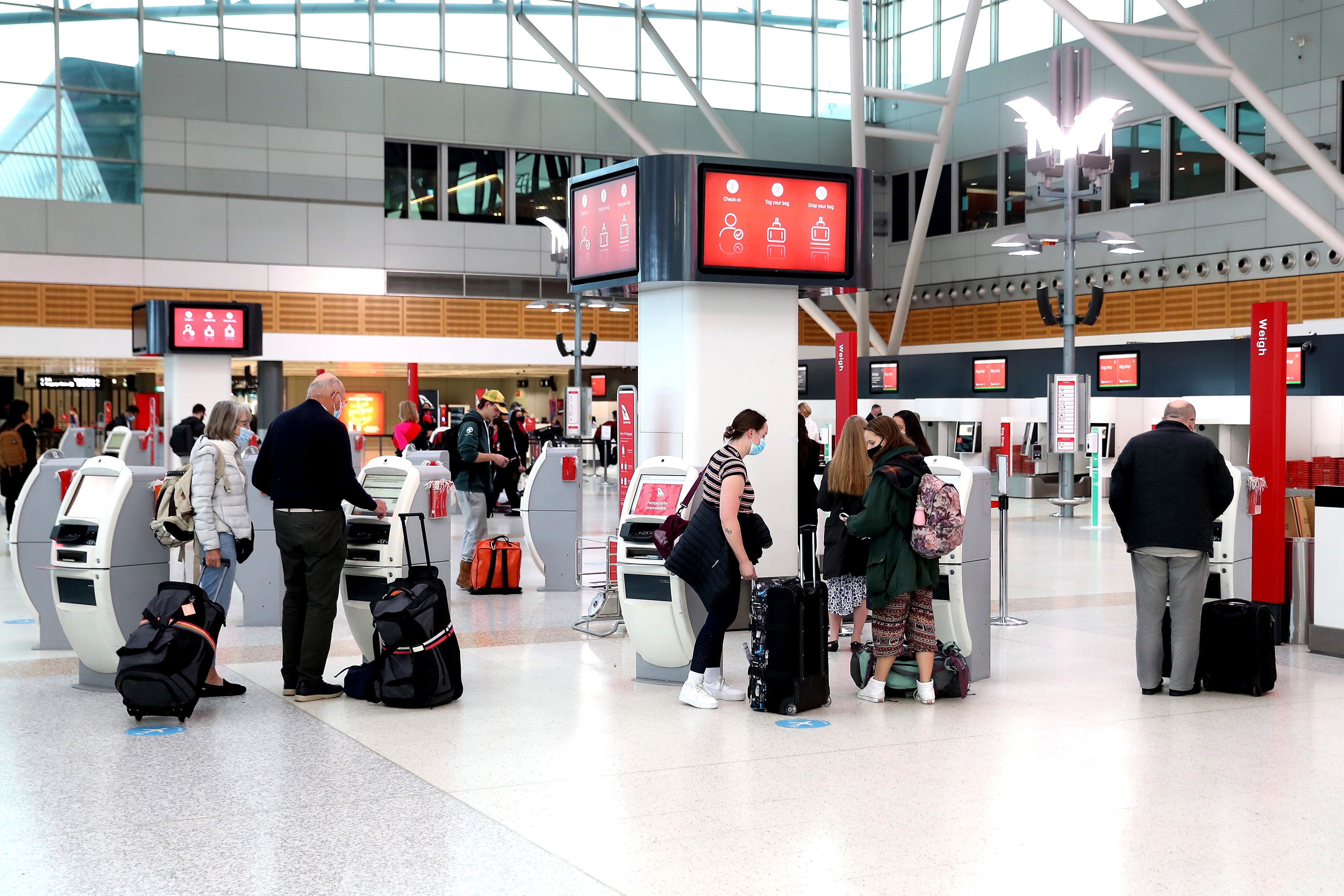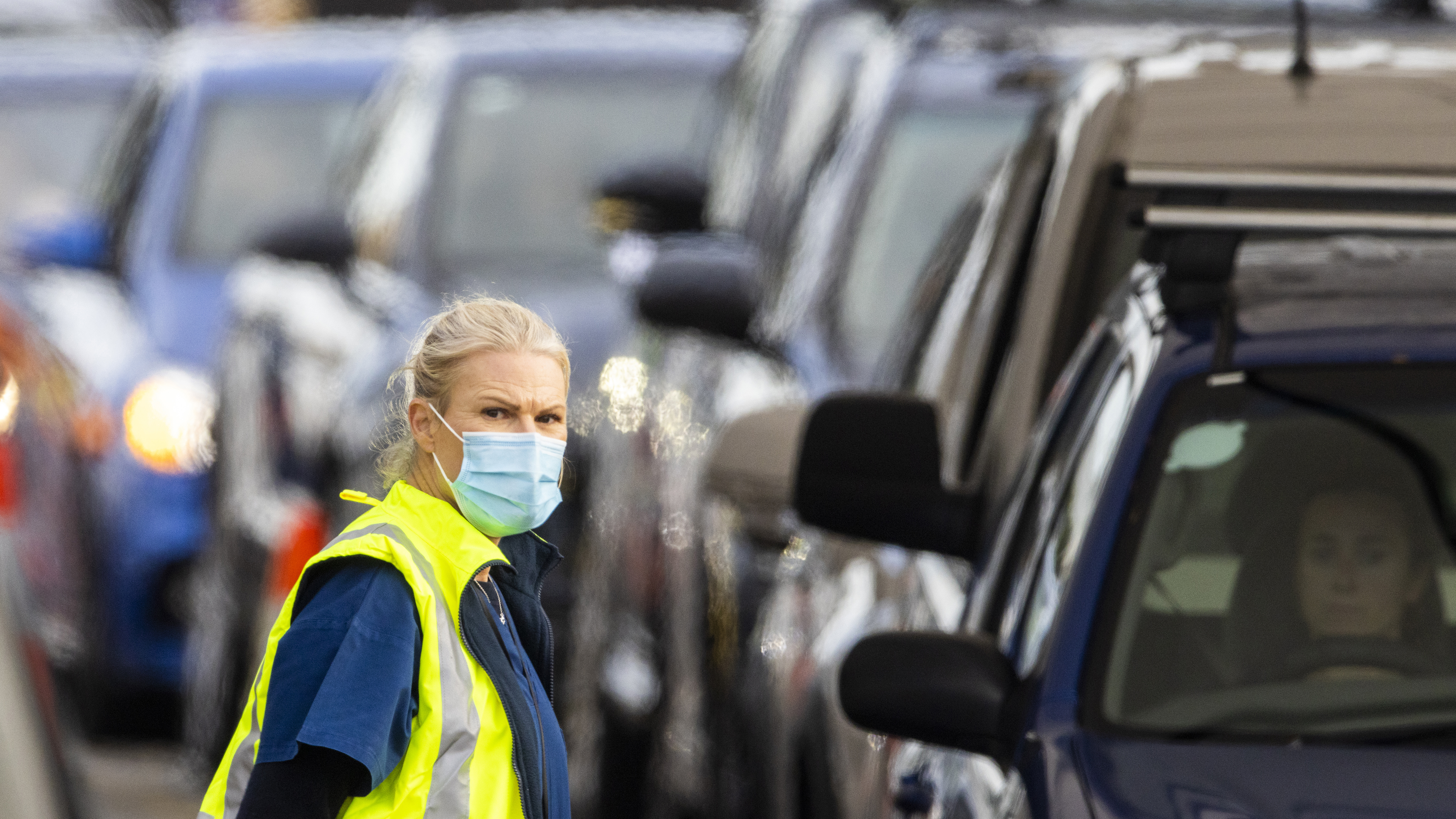States and territories around the country have been thrust into lockdown as they fight a nationwide outbreak of COVID-19.
Restrictions have eased across some areas, but a number of rules still remain in place.
Here is the latest state-by-state rundown on border restrictions and lockdowns from around the country.
NEW SOUTH WALES
Anyone living in the Greater Sydney region is currently subject to a two-week stay-at-home order.
Residents are only able to leave their homes for essential reasons including grocery shopping, exercise, receiving medical care and essential work and education that cannot be done from home.
In regional NSW, only five visitors are allowed at a home at once, a 20 person limit applies to gyms and singing and dancing at indoor venues is not permitted.
Dancing is allowed at weddings for the bridal party only (no more than 20 people) and a maximum of 100 people are allowed at funerals.
Here's a full breakdown of what you can and can't do in NSW.
Service NSW QR codes are also being made mandatory at all workplaces and retail businesses from July 12 to aid contact tracers with a rapidly growing list of exposure sites across the city.
In addition, NSW has introduced new travel rules for anyone arriving from the Northern Territory, Queensland or Western Australia.
Anyone travelling to NSW who has been in those areas in the previous 14 days must complete a declaration form.
"Do not travel to NSW if you have attended a venue of concern as close contacts must isolate immediately, get tested and remain in isolation for 14 days, and contact the relevant health authorities in their state or territory," NSW Health said.
Those still permitted to travel to NSW from Wednesday and have been in areas that are subject to lockdown measures, must follow the stay-at-home orders in place in NSW for 14 days after being in the lockdown area.
The declaration form is available on the Service NSW website, and can be completed in the 24-hour period before entering NSW or on arrival.
VICTORIA
Victoria has paused its easing of restrictions for seven days as the rest of the country battles coronavirus outbreaks.
Private household gatherings are currently capped at 15 people including dependents and public gatherings can occur with a maximum of 50 people.
Masks are required to be worn indoors and outdoors when social distancing is not possible.
Health Minister Martin Foley said while the state had originally planned to wind back restrictions on July 1, allowing full capacity at theatres and 85 per cent capacity at stadiums, the easing had been postponed.
"We are not increasing restrictions, as other states around the Australian mainland are, but what we are doing is holding them where they are," Mr Foley said.

Victoria has also tightened border controls with neighbouring states in lockdown.
Eleven Queensland Local Government Areas (LGAs) which were in a three-day snap lockdown - spanning from the Gold Coast to Townsville - are now classed as red zones.
The Perth and Peel regions have also been marked as red zones.
READ MORE: Victoria puts travel restrictions on parts of Queensland, WA
A red zone classification means people are banned from entering Victoria unless they are Victorian residents who are willing to quarantine for 14 days.
All arrivals into Victoria must apply for a travel permit even if they are entering from a green zone.
Exceptions and exemptions are listed on Victoria's travel permit website.
Darwin has also been declared a red zone, along with large parts of NSW.
QUEENSLAND
Queensland's three-day lockdown for Greater Brisbane and Moreton Bay regions will end at 6pm today, despite the state recording five new local cases of coronavirus.
The two LGAs were forced into an extended lockdown while contact tracers worked to identify new exposure sites.
Other lockdowns in the state already ended for LGAs including Noosa, Sunshine Coast, Ipswich, Logan, Redlands, Gold Coast, Scenic Rim, Lockyer Valley, Somerset and Townsville.
Mask mandates still remain in place for affected LGAs.
Residents must wear a face covering at public indoor settings including aged care facilities, hospitals and supermarkets.
READ MORE: Queensland records three new cases of COVID-19
In addition to domestic restrictions, anyone who has visited Greater Sydney is also subject to the stay-at-home order currently in place in NSW.
The LGAs of Waverley, Woollahra, Randwick and the City of Sydney have also been declared a COVID-19 hotspot, backdated to June 11.
Anyone who has been in these LGAs will not be allowed to enter Queensland, unless they are a returning Queensland resident or have an exemption.
Anyone allowed to enter will need to go into hotel quarantine for a period of two weeks.

SOUTH AUSTRALIA
Additional restrictions have been introduced for SA, including the following:
- When out in public, South Australians are urged to wear a mask
- Personal gatherings limited to a maximum of 10 people
- People should work from home if they can
Premier Steven Marshall said a lockdown was not yet necessary.
READ MORE: South Australia records five new COVID-19 cases
https://twitter.com/ollie_haig/status/1410485060227063808?ref_src=twsrc%5Etfw"I think many people will be extraordinarily relieved by that," he said.
The restrictions comes after five new cases of COVID-19 were recorded on Wednesday however none of them spent any time in the community while infectious. All are from one family, with a sixth case identified today.
In addition to the extra precautions, previous restrictions remain in place.
All indoor venues must adhere to the one person per two-square-metre rule.
Face masks are mandatory in high-risk settings such as health care facilities, residential aged care facilities, allied health, and when providing personal care.
Gatherings at a private home are limited to 50 people while the maximum attendance permitted at a wedding or funeral is 150 people (unless at a licensed premises, where the one person per two-square-metre rule applies).
A hard border is now in place with NSW, the ACT, NT, WA and Queensland.
People who have visited Tier One or Two exposure sites in Victoria are also prohibited from entering.
A list of exemptions are provided on the SA Health website.
NT
The Northern Territory's lockdown has ended for the Top End and Alice Springs, Chief Medical Officer Michael Gunner has announced.
From 1pm today there are now no restrictions on the reasons to leave home if you live in Greater Darwin or Alice Springs but some restrictions remain in place until 1pm on July 9.
The following rules and restrictions will remain in place:
- Travel will be permitted across the Territory.
- Face masks must be worn when you are unable to physically distance – this includes at places like the supermarket, shops and hairdresser. Workers who come into close contact with patrons, or who work in crowded environments will need to wear a mask.
- Up to 10 people can visit your home at a time.
- Restaurants, cafes and pubs will re-open for seated service only. Patrons will be required to wear a mask when they go to the bar to order.
- Big events must have the Territory Check-In QR Code system in place and be able to comply with physical distancing and mask-wearing requirements.
- No contact sports. Indoor exercise including at gyms, Zumba, barre, pilates and yoga studios will remain closed.
- Places of worship will open. Masks must be worn and physical distancing applied.
- Schools, vacation care and childcare centres will open.
The Territory has also introduced border restrictions, with Perth and Peel now considered hotspots in terms of travel to the NT.
All areas in Queensland currently lockdown are also now declared hotspots.
WA
Perth and Peel regions exited a snap four-day lockdown at midnight.
WA Premier Mark McGowan defended the decision to lockdown, comparing the state to NSW and the coronavirus situation in Sydney.
"I remind you to look at Sydney. I expect their lockdown will go on for a long time," he said.
"That is an area of probably five or six million people in lockdown for weeks and weeks on end. We have avoided that, and I want us to keep on avoiding that."
There are still almost 30 exposure sites listed on the WA Health website where people must get tested and monitor for symptoms.
Several schools are among the listed locations visited by a positive COVID-19 case.
Queensland is now classified as medium-risk with travellers now required to have an exemption to cross the border.
Returning WA travellers will be granted an exemption on compassionate grounds but must still undergo 14 days of quarantine.
A hard border has also been introduced with NSW.
ACT
Face masks are now required in certain public settings within the ACT.
While there is currently no community transmission, masks will add another line of defence as we work to keep COVID-19 out of Canberra.
The ACT has now declared NSW, the NT, Queensland, Victoria and New Zealand as areas of concern.

Non-ACT residents who have been in the Greater Sydney, Central Coast, Blue Mountains, Wollongong and Shellharbour regions of NSW are not permitted to travel into the ACT unless they have an approved exemption.
The same restrictions apply to people in the NT and Queensland who have visited listed exposure sites.
In addition, anyone hoping to travel from Victoria into the ACT will need to complete an online declaration form within 24 hours prior to arrival.
TASMANIA
No additional restrictions have been introduced in Tasmania however border controls have been reinstated.
Perth and Peel regions are now classified as "high risk" areas.
As a result of this, those who have been in high-risk areas in WA won't be able to travel to Tasmania without an exemption.
Most NSW residents are restricted from entering Tasmania unless approved as an essential traveller.
The state has also closed its borders to Greater Darwin and most of Greater Sydney.
Anyone who has been in any of the NSW LGAs listed as high-risk on or since June 21 have been told to isolate immediately and arrange a COVID-19 test.
"You need to be tested at least five days after you left the high-risk LGA and will be able to leave isolation if you receive a negative result," the health department said in its latest alert.
Anyone who has visited a high-risk LGA, including returning Tasmanians, is no longer able to enter Tasmania unless approved as an essential traveller.
For the NT, Darwin, Palmerston and Litchfield have also been listed as high risk with travel restrictions now in place.
Tasmanian health authorities have also listed a number of venues in WA, Victoria and Queensland.
Anyone who has visited the listed locations at the specified dates and times listed below will not be permitted to travel to Tasmania.
